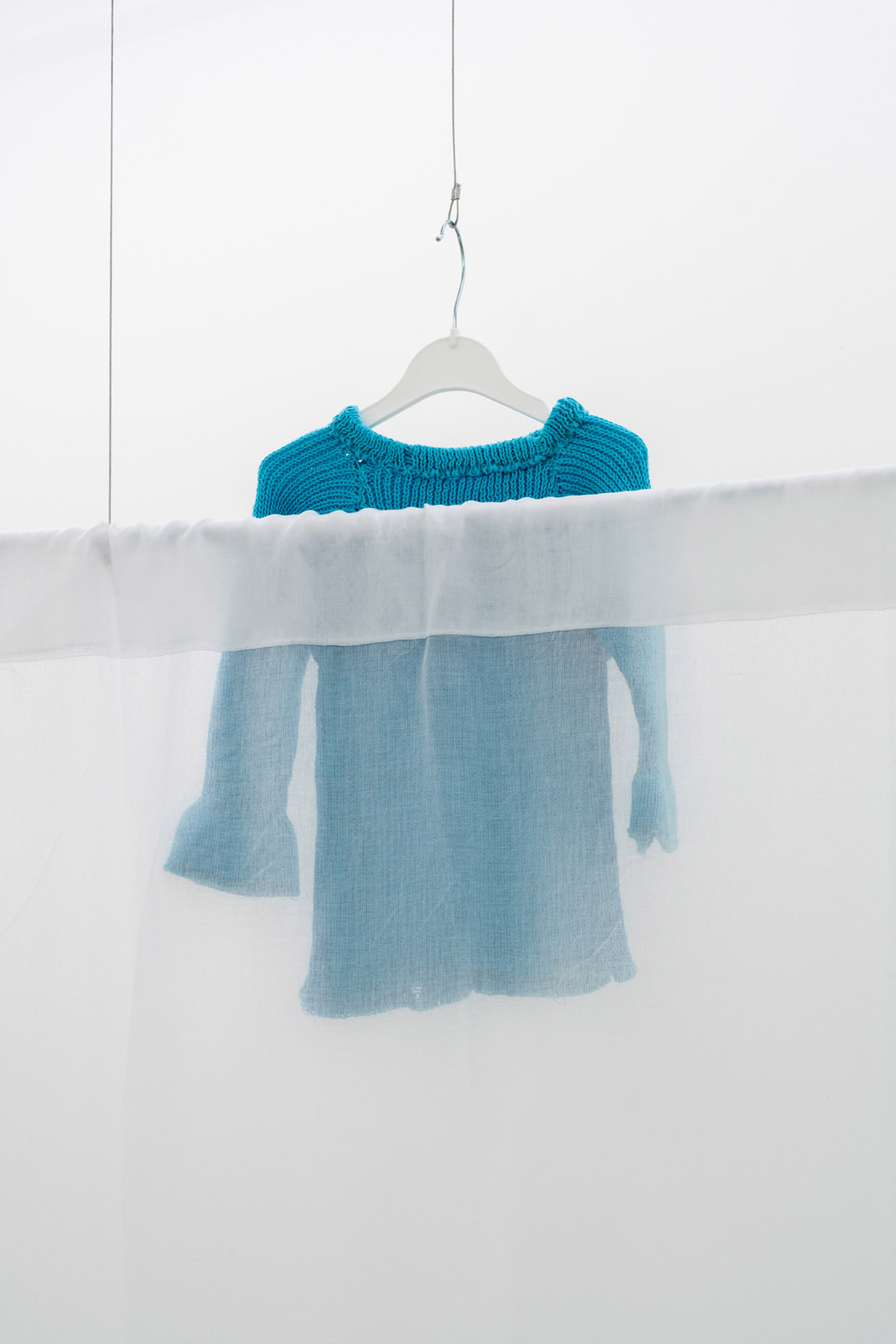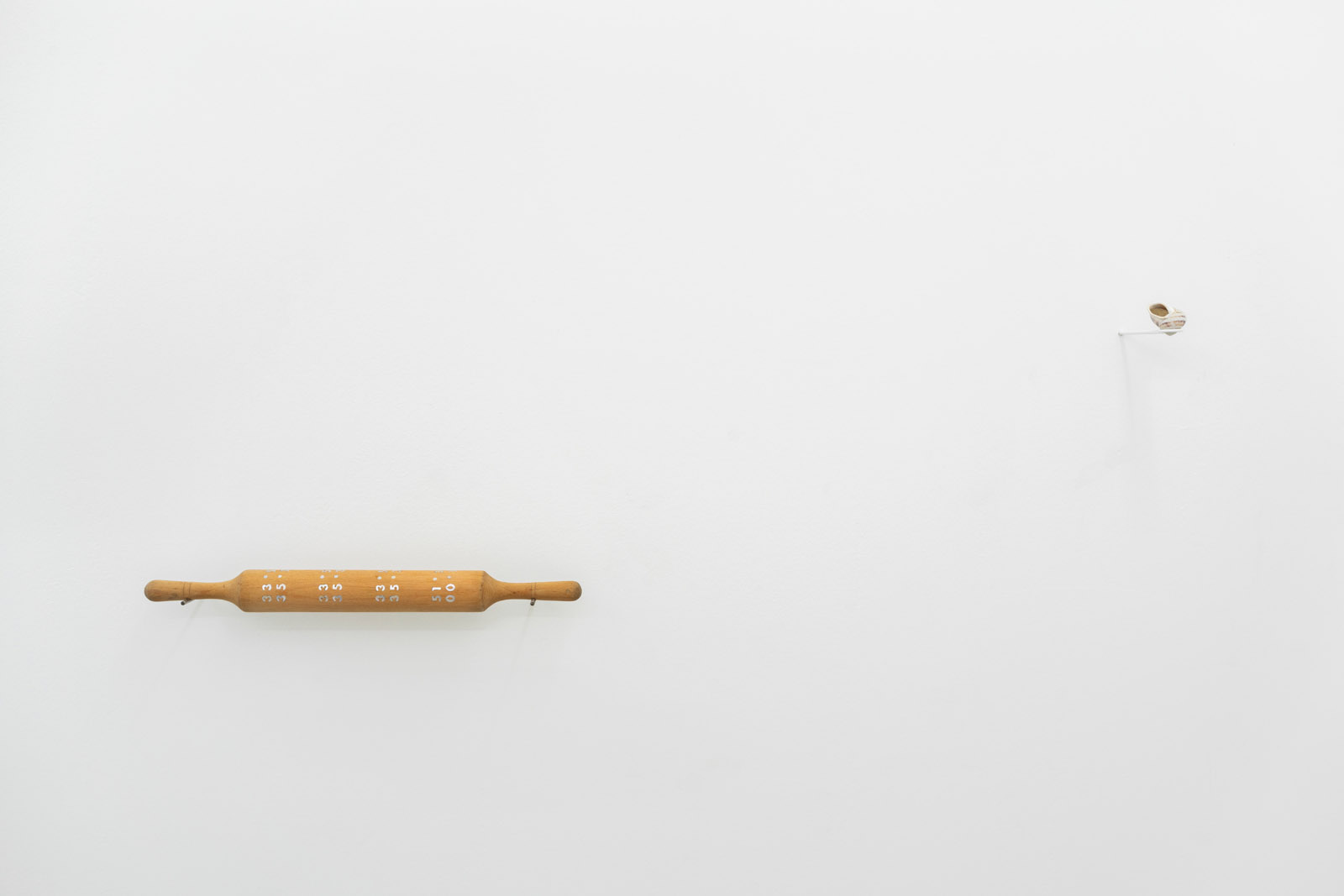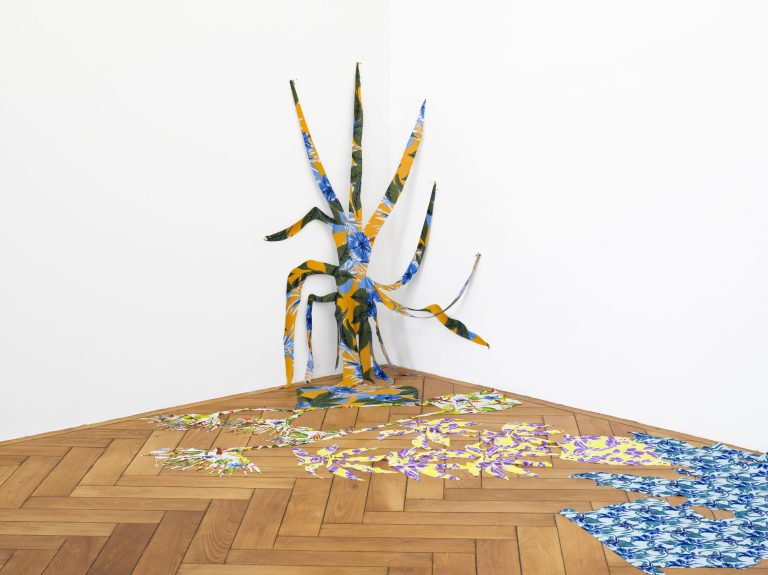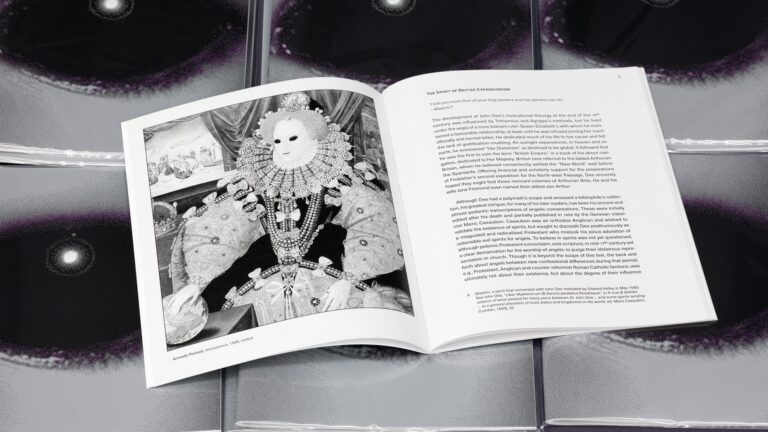Artists: Caline Aoun, Sirine Fattouh, Paul Hage Boutros, Martín La Roche, Marwan Moujaes, Stéphanie Saadé, Sanne Vaassen, Maha Yammine
Exhibition title: Game Of Goose
Curated by: Stéphanie Saadé
Venue: SALTS, Birsfelden, Switzerland
Date: September 17, 2020 – January 30, 2021
Photography: Gunnar Meier Photography / Courtesy: SALTS & the Artists
Game of Goose is an exhibition conceived by Stéphanie Saadé, with works by herself and seven artists with whom she knows personally: Caline Aoun, Sirine Fattouh, Paul Hage Boutros, Martin Laroche, Marwan Moujaes, Sanne Vassen and Maha Yammine. Thematically and stylistically the exhibition appropriates the eponymous board game’s rules and structures. Like the boardgame, the space is choreographed inside a spiral, it also invites the viewer to participate. Played by Saadé as a child, the Game of Goose was not initially intended as a children’s game, a somewhat forgotten today. Originating in the XVIth century, the Game of Goose was decorated with illustrious illustrations depicting the political and societal concerns of the century. For this reason the boardgames popularity spread quickly across Europe.
The Game of Goose is a game of chance, to win one must exit a spiral path by throwing dice on the most opportune box. Some boxes contain symbolic or mythological figures which bring the player – the “ocadulophile” in French – backwards and forwards, or they may leave them inert. The boxes have titles such as the Bridge, the Hotel, the Well, the Maze, the Prison, and Death – places commonly signifying transition, fortune or stagnation. In the game, the obscure pathway snakes around the shape of a goose, an animal symbolically known to forewarn of immanent danger. In the exhibition, the visual and structural conceit of the game is extended to the entire space of SALTS; outlines, figures and pawns for example materialise as artworks and performances implemented by the artists – or rather the players. Viewers of the exhibition can choose to be players too and generate changes in the setting’s order, or they can simply choose to be observers of the game.
Common themes shared by the works in the exhibition oscillate between the childish, the tiny, the ludic, the poetic, the psychological, the social and the political. The works derive from or are accidentally linked to current events such as the worldwide sanitary crisis and its consequences, the lockdown, or the current political and economic turmoil in Lebanon, becoming allegories of these shared or distant experiences.
1.(Please see map on the last page) The exhibition starts with a peculiar soap resting on a washbowl. It can be used by visitors entering the space so they can perform the reassuring preventive measure against germs and viruses, measures taught to us as kids but never implemented with as much dedication as today. The soap, titled Chinese Whispers (2014), is a work by Dutch artist Sanne Vaassen and is a cast of the space between her two hands. It acts as an impossible handshake greeting every visitor, a caress that gradually erodes the shape of the soap and erases the presence of the artist. We are tempted to look at the other works by Vaassen in the exhibition through the lens of what we’ve lived: the constant but imperceptible presence of danger around us.
2.Intermediary (2013), usually performed by Vaassen alone, is re-enacted in the exhibition by the public that blows blue pigment onto an invisible circle of glue on the wall. The combined action of breaths – what we fear most today: other peoples exhalations – makes the shape appear, a shape reminiscent of the planet that we inhabit together.
16.In Wolk (2013), Vaassen pours glitter from a small phial onto water reflecting a landscape. The glitter beautifully pollutes, or contaminates the landscape, before quickly fading away.
17.Between the Mountains and the Sea (2013) also by Vaassen is a river stone separated from the water it comes from by a plastic bag’s membrane. Normally, they would not be apart.
14. On our left when we enter the exhibition, a neon by Lebanese artist Sirine Fattouh illuminates the space around it. The blue sign spells the words Affect and Infect, written in the artist’s own handwriting. The two words mirror each other, and while Affect is legible (from left to right), Infect has to be deciphered. Realized in 2019, the work initially alluded to the infectious capacity of negative emotions – the word infect also meaning foul in French. The cause and effect relationship established between both words can nevertheless easily be reversed and Infect could have a more predominant position today, giving the work a premonitory dimension.
21. Obliquely linked to writing is Caline Aoun’s Reading the flows over durations (2020). Dis-played in the center of the exhibition, the fountain reminds us of Persian enclosed gardens: their central fountain and crossed-shaped alleys aimed at replicating Eden, the garden of paradise, from the middle of which four rivers flow towards the four cardinal points. In 18th and 19th century architectures visible in Lebanon, fountains were integrated indoors, where they played a political role, as the sound of the water would scramble voices engaged in secret conversations. This political aspect is present in Aoun’s fountain where water, usually used to purify, quench or amuse, has been replaced by cyan ink, the same ink used for four-color printing (CMYK) of media-related material such as newspapers, magazines, posters, advertisement. We contemplate the flow of ink at potential stage, while it splashes gently but relentlessly inside the fountain. Could it also be rendering the daily profusion of data impotent by transforming its production process into a decorative object?
20. Nearby the fountain is another altered ornament, a necklace of an unusual length, Building a Home with Time (2020) by Stéphanie Saadé. The work hangs from the ceiling and sprawls over the ground. The white wooden beads are taken from children’s crafts and their number, 3832, is also relative to childhood as it embodies the number of days between the artist’s birth and the official end date of the Lebanese war. The work – almost an abacus, or a rosary– gives an abstract glimpse at a troubled moment of history through the lens of a sweet one.
11. In We’ve Been Swallowed by Our Houses (2020), Saadé addresses the shift in perception of space in relation to the slow passage of time. During lockdown she measured her apartment in Beirut and drew a map of it before turning it into a human-scale labyrinth. The plan was then embroidered on a tablecloth made to the size of her dining table. The embroidery uses the Syrian traditional Aghabani technique composed of chain-stitches and spiral patterns – now available in Lebanon due to the presence of refugees, paradoxically, the ones who lost their home. The work expresses her feeling of a shrinking inaccessible outside space in relation to the densification of the – only accessible – interior space of the house. Imagine getting lost inside your own house… the title pictures home as a belly, evoking sacred and secular stories such as Jonas and the whale or Pinocchio… a pregnancy in reverse.
10. Rolling Pin (2020) originates from Saadé’s family home. She borrowed the worn object during lockdown when baking took a prominent place in many people’s lives. Later, she encrusted it in mother of pearl with the geographical coordinates of her four family members (father, mother, artist, brother), who all currently live in different houses, towns and countries.
9. The final work by Saadé in the exhibition, is a found hollow snail shell which also evokes the domestic space in a harsh but anecdotal way: the empty “home” is filled with a powder pigment called Terre Pourrie (rotten earth).
22. (outdoors) Serendipitous affinities exist between the works by Saadé and those by Mar-wan Moujaes. Such as the banner hanging on the outside of the exhibition space, which states that Birds’ flight is suspended between 9am and 5pm. Realised in 2019, the poetic announcement takes another turn today: the curfew corresponds to the usual hours of activity in the day, adopted by humans not commonly birds. During lockdown our so called produc-tive time period shifted to protracted moments of inactivity.
19. The baptism of the artist (2019) tells, with a conventional oil painting, the story of a post-ponement. According to the artist’s statement on the work: “In March 1991 Marwan Moujaes was baptized according to the rites of the Greek Orthodox Church in Mhaydseh, a small Lebanese village. Based on photographs from the event, Moujaes painted, 28 years later, a scene depicting the moment when the water touched his head and the Christian mystery was, somehow, accomplished. However, at that time, the Lebanese civil war had delayed the artist’s baptism for two years. The family was forced to stay at home until the end of hostilities. Thus, instead of being baptized at the age of six months, he was baptized at the age of 2 years and disturbed the course of the ritual. In fact, the body of the child growing larger made impossible the accomplishment of the three immersions in the holy water. The mystical gesture did not take place properly and a simple pouring of water on the head was improvised. The ritual was left incomplete, making the validity of the baptism possibly questionable.”
18. Still life with fire and two potatoes (2020) by Moujaes stems from the popular uprising that started in Lebanon on October 17, 2020. Present in Beirut at that moment, the artist cooked potatoes in one of the street fires that some demonstrators ignited regularly from tires and garbage as a sign of protest and in the aim of blocking roads and stopping the country’s activity. The artist chose to engage in a domestic occupation in the streets, as a way of reclaiming public space – one of the protesters’ requests. In such hectic times cooking could be seen as a way to stay calm when everything around was “on fire”. The daily Lebanese newspaper An-Nahar, placed on the stool, shows on its front page the specific fire where, on the previous day, the potatoes were cooked- suggesting the newspaper had documented the trivial event. The plate of cooked but uneaten potatoes, presented with a fork, a knife as well as a salt-shaker are in reality nothing but physical archives to reflect on the still blazing events.
12/13 News is undoubtedly present in Martin La Roche’s Quick Crosswords Series (2020). In the work newspaper cuttings are painted by the artist in the traditional medium of watercolour. Like Moujaes’ uneaten potatoes, the crosswords that La Roche continuously collects are ones that haven’t been “consumed”. These passe-temps, the artist affirms, remain intact and the pleasure derived from making them is somehow preserved and still contained in them. Aesthetically enjoyable, the watercolours nevertheless connect strongly to the political and social contexts that they are issued from: they are extracted from various international news-papers and their titles give us hints about their origin. Their pixelated appearance seems to indicate an image – potentially from the news – that refuses to appear anymore; displayed horizontally, they also become boardgames, linking back to the shows theme and the Game of Goose.
8. In his Musée Légitime (2017 – ongoing), La Roche further evokes the space in and of the head; the artist has expanded on historical French Fluxus artist Robert Filliou’s Galerie Légitime: “ In January 1962, the globetrotter artist founded his own gallery in the form of a cap. This Galerie Légitime draws on Marcel Duchamp’s idea of a miniature museum in a suitcase. This enabled Filliou to open his exhibition for anyone at any time and at any place: in the streets, in bistros, in shops, or in museums. His cap later grew to the size of a bowler hat, and then a top hat containing works by artist friends, and was sold in Perspex versions.” La Roche made a consequent shift from gallery to museum, getting closer to Duchamp’s idea of a portable museum (Boîte en Valise) except for the fact that the works inside are mostly by artists other than himself. The museum’s eclectic collection is not exclusively composed of miniatures or small-scale artworks, but also of “things” donated by famous and less famous artists that La Roche solicited. Displaying the collection occurs when the artist – also director and definitely story-teller –, curates a show in one of the museum buildings (there are four to date), and generously presents each work in whichever hat that he is wearing over the course of the performance, or museum tour. In Game of Goose, the stories are available via the AR app PRIMO Print in motion. (Available from Friday, 18 September. 1. Dowload the app. 2. Follow the instructions. 3. Scan the floor text next to the hat.)
6. Gothenburg based Lebanese artist Paul Hage Boutros’ Nothingness (2015) is composed of cuttings, this time from books. It is actually the whole printed content of three pillars of literature which he has patiently shredded in equally wide strips, before assembling them into a dense spiral revolving around a void, as the work’s title hints at; a truly absorbing swirl. The work and the Game of Goose board (also revolving around nothing) share kindred shapes. Fathers and sons by Ivan Turgenev (1862), The Metamorphosis by Franz Kafka (1915) and The stranger by Albert Camus (1942)’s order is respected but the books have become illegible, or invite to another form of reading or rather of being absorbed.
15 In Prosthetic Love (2016), Hage Boutros similarly engaged in the daunting and meticulous process of compiling 5 years of I-messaging between him and his partner into a book. The thick volume is free to be leafed through by the public as they please, which puts the artist a nu and turns the spectators into amused voyeurs. But one quickly realises that the work’s relevance is not the messages themselves but in the daring and seminal act of putting out in the open what we all carefully hide in our most private devices. The book materializes the enormous amount of data exchanged with one person alone, but also unusually transforms that virtual exchange into a more conventional – and probably romantic – epistolary one, such as those of important writers and artists.
7. On another note, Hage Boutros’ gesture might announce what our data as artists will look like once it is appropriated and offered to the public eye after our deaths. Everything Counts (2015) is a digital clock also engaged in a furious race, that of counting the seconds since the artist’s birth an onwards. Set to count indefinitely, the menacing clock at first glance, which gives the impression of a countdown and a most furtive passage of time, faster than a heartbeat or a breath, actually cancels death and projects the artist’s life into infinity and immortality, as it will continue counting even after his own disappearance with no interruption marking that event. The clock guarantees the constancy of the artist and his longevity – that of his art as well –, through the coming centuries. For once, the passage of time is not figured as a fatality but on the contrary as a joyful and lively perspective of durability.
5. Back to the vocabulary of childhood and playfulness, Lebanese artist Maha Yammine achieves the prowess of making a wall stand on marbles (Wall, 2015). The imposing white architectural element gains a surprising and uncanny lightness by its elevation of a few centimetres and its interaction with the ludic colourful glass spheres which carry its weight, as if by magic. Spreading underneath it into a puddle, they constitute a small defensive territory, a classic but efficient trap as the one who ventures too close trips and falls. Still, the impressive wall (itself an obstacle) rests on uncertain grounds and could call to mind the period of the Lebanese war gone through by the artist during her childhood, where leaving or moving houses was common, as well as forced departure to other countries, as is the case again with the chaotic current situation in Lebanon.
4. Blue Dress (2017) summons and transcends the same kind of historical experience; exhibited on a hanger is Moussa’s touching ouvrage, a blue woollen dress that Yammine asked him to make more than forty years after he had stopped working in the field. She explains: “Moussa spent six years of his childhood making little girls’ dresses as a part of the family work. In 1975, the store that used to buy the family production closed and the family stopped sewing dresses.” Analogous to memories and recollections which only come back to mind distorted or incomplete, Moussa’s garment’s could very well be an apparatus to dress in mentally and remember this moment. The imperfect dress perfectly embodies Lebanon of that period, and Moussa’s savoir-faire which has been lost echoes what has been lost in the course of the war and will never come back anymore in the same way.
3. Phone (2017) is a yoghurt-phone game delicately crocheted by the artist herself – another passe-temps back in fashion during lockdown, when time is plentiful. Typically made with two plastic containers connected together by a thread of wool, the transmitter here extends its material to the whole object, making it unusable. The connection with childhood sounds interrupted, but the object equally appears to condemn communication through devices, no matter how ludic or rudimentary, and gives hope to abandon them for more direct interaction, greatly missed in the last couple of months.






































